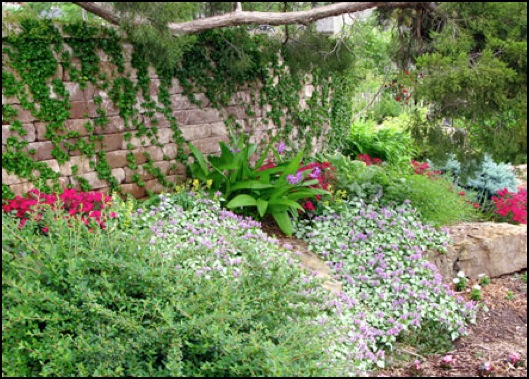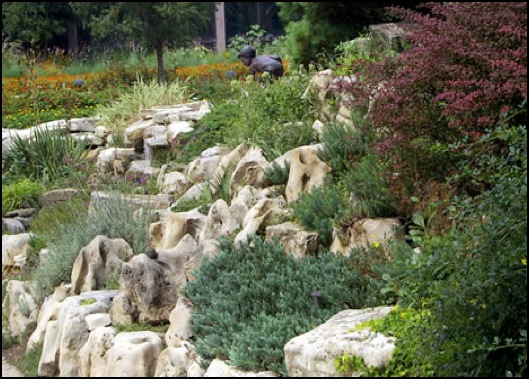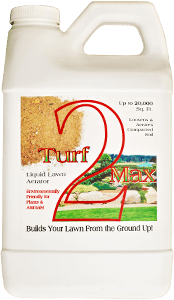We will discuss in this article two methods for landscaping a slope, the basin and terrace design.
Reduce Soil Erosion
The most important goal of any project on a hillside is to prevent and/or mitigate erosion impacts. Rain will most certainly wash away topsoil, therefore exposing the roots of plants and causing them to die.
Limited water infiltration is an issue that must be dealt with, particularly on a slope. This includes water from rainfall and from irrigation. The use of soil amendments such as mulch and a liquid soil aeration product such as Turf2Max will help reduce the erosion problems. This can become a real problem when dealing with clay soils.
There are two methods commonly used to help prevent erosion on a slope, retaining walls (terraces) and basins.
Terrace Landscaping Design
This is the most common method for incorporating retaining walls into the landscape. This method is very useful on moderate to steep slopes.
It can be designed as one high wall usually with a large flat area at the base. However, most of the retaining walls are a series of low structures that have level terraces between them. The width varies from as little as 3 to 4 feet to large areas between the walls. The number of walls is determined by the overall height and length of the slope.
Terraces prevent erosion by shortening the long slope into a series of shorter, more level steps. This allows heavy rains to soak into the soil rather than run off and cause erosion.
Be sure the terrace material is strong enough and secured to withstand the cycle of freezing and thawing and heavy rainstorms. High water pressure can build up behind a wall that could cause a structural failure.
Numerous materials are available for building terraces. Treated wood is often used because several advantages: it is easier to work with, adds a natural look by blending with plants, and is often less expensive than other materials.
Other materials for terraces include bricks, rocks and concrete blocks. Some masonry materials are made specifically for walls and terraces, therefore, should be easier to build with. Masonry materials will last longer and tend to give a substantial presence to the landscape.


Basin Landscaping Design
The basin design involves installing boulders of various sizes into the sloping soil. Next, you dig small basins into the slope as individual planting holes. Alternate the holes to give a natural appearance and to help slow down the movement of water.
Be sure to dig the holes big enough to allow the plant roots to expand into the adjacent areas. Many gardeners prefer the basin design because it has more of a natural look. Designing short walls that are constructed of large and small rock transforms this into a rock garden.
Plant Selection
After these tasks are completed now is the time to plant erosion control vegetation, particularly species that develop a substantial root system. Bunch grasses and shrubs work quite well. Then strategically place ground cover plants which spread laterally more than vertically thus will cover an area in less time.
A species to consider is Juniperus horizontalis. Evergreens are great, especially during winter when most other plants are dormant. Other species that work well are Pachysandra terminalis, Euonymus fortunei, Ajuga species and Potentilla species.
Consider planting wildflowers which add a beautiful appearance to your landscape. In shaded areas, Hosta, ferns, ajuga, and vines add a nice touch to your landscape.
Finally, be sure to add mulch and erosion control fabric or netting to prevent soil erosion due to construction and planting. Yes. Landscaping a slope can be hard work. However, the payoff is transforming ugly eroded slopes into beautiful gardens.

